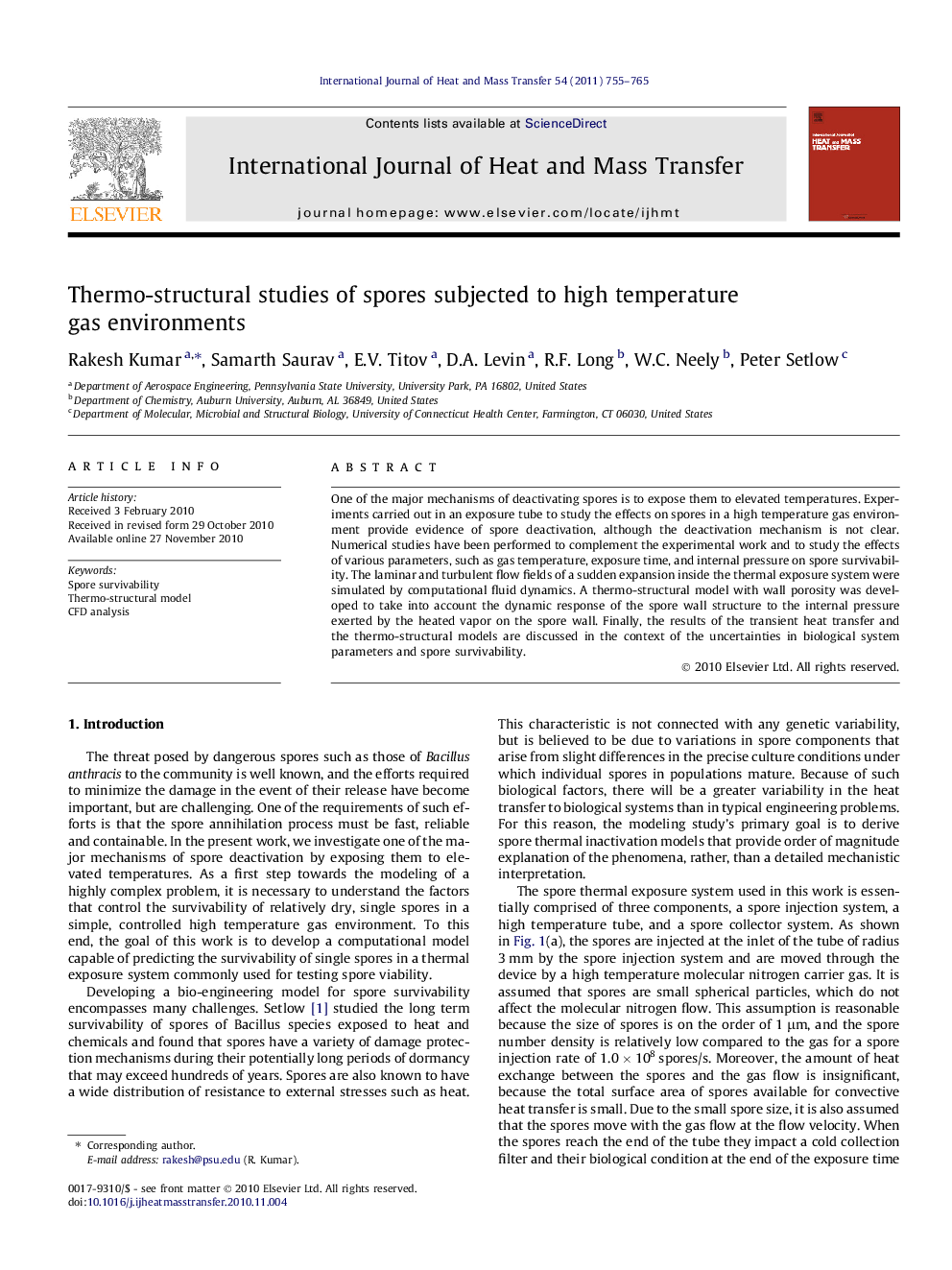| Article ID | Journal | Published Year | Pages | File Type |
|---|---|---|---|---|
| 660316 | International Journal of Heat and Mass Transfer | 2011 | 11 Pages |
Abstract
One of the major mechanisms of deactivating spores is to expose them to elevated temperatures. Experiments carried out in an exposure tube to study the effects on spores in a high temperature gas environment provide evidence of spore deactivation, although the deactivation mechanism is not clear. Numerical studies have been performed to complement the experimental work and to study the effects of various parameters, such as gas temperature, exposure time, and internal pressure on spore survivability. The laminar and turbulent flow fields of a sudden expansion inside the thermal exposure system were simulated by computational fluid dynamics. A thermo-structural model with wall porosity was developed to take into account the dynamic response of the spore wall structure to the internal pressure exerted by the heated vapor on the spore wall. Finally, the results of the transient heat transfer and the thermo-structural models are discussed in the context of the uncertainties in biological system parameters and spore survivability.
Keywords
Related Topics
Physical Sciences and Engineering
Chemical Engineering
Fluid Flow and Transfer Processes
Authors
Rakesh Kumar, Samarth Saurav, E.V. Titov, D.A. Levin, R.F. Long, W.C. Neely, Peter Setlow,
